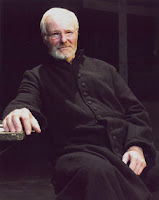SAN FRANCISCO, Nov. 22, 2010 /Christian Newswire/ -- Ignatius Press has just released a new biography about Father Damien, the priest who is famous for his missionary work with exiled lepers on the Hawaiian island of Molokai, who is now finally Saint Damien. His sanctity took 120 years to become officially recognized, but between his death in 1889 and his canonization in 2009--amid creeping secularization and suspicion of the missionary spirit he so much embodied--Father Damien De Veuster never faded from the world's memory.
What kept him there? What keeps him there now?To find an answer, Belgian historian and journalist Jan De Volder sifted through Father Damien's personal correspondence as well as the Vatican archives. With careful and even-handed expertise, De Volder follows Father Damien's transformation from the stout, somewhat haughty missionary of his youth, bounding from Europe to Hawaii and straight into seemingly tireless priestly work, to the humble and loving shepherd of souls who eventually succumbed to the same disease that ravaged his flock. "The Spirit of Father Damien" is illustrated with many photos of Damien throughout his life that paint a vivid picture of his work and missionary spirit.
De Volder finds that--as spiritual father, caretaker, teacher, and advocate--Father Damien accomplished many heroic feats for these poor outcasts. Yet the greatest gift he gave them was their transformation from a disordered, lawless throng exiled in desperate anarchy into a living community built on Jesus Christ, a community in which they learned to care for one another.
De Volder says, "I have known Damien since my childhood, as has every Belgian. It struck me that, even in so secularized a country as Belgium, he's still widely admired for what is seen as his humanitarian deeds for the leper-outcasts of his time. Yet, you cannot grasp the meaning of Damien's self-gift without an understanding of his deep faith and obedience: he shows that love for the Gospel, love for the Church, and love for the poor belong together. And Damien's witness has been so powerful that even today his story inspires many to live lives devoted to Jesus and the sick, the poor, and the weak."
To request a review copy or an interview with author Jan De Volder, please contact: Rose Trabbic, Publicist, Ignatius Press, rose@ignatius.com
+++++++++++++++++++++++++++++++++++++++++++++++++++
Disclaimer
No responsibility or liability shall attach itself to either myself or to the blogspot ‘Mozlink’ for any or all of the articles/images placed here. The placing of an article does not necessarily imply that I agree or accept the contents of the article as being necessarily factual in theology, dogma or otherwise.
Mozlink
Disclaimer
No responsibility or liability shall attach itself to either myself or to the blogspot ‘Mozlink’ for any or all of the articles/images placed here. The placing of an article does not necessarily imply that I agree or accept the contents of the article as being necessarily factual in theology, dogma or otherwise.
Mozlink



